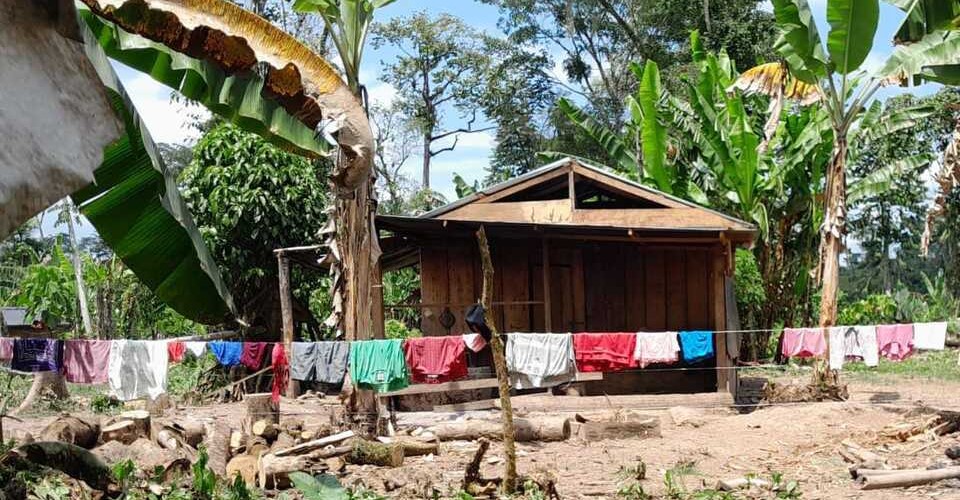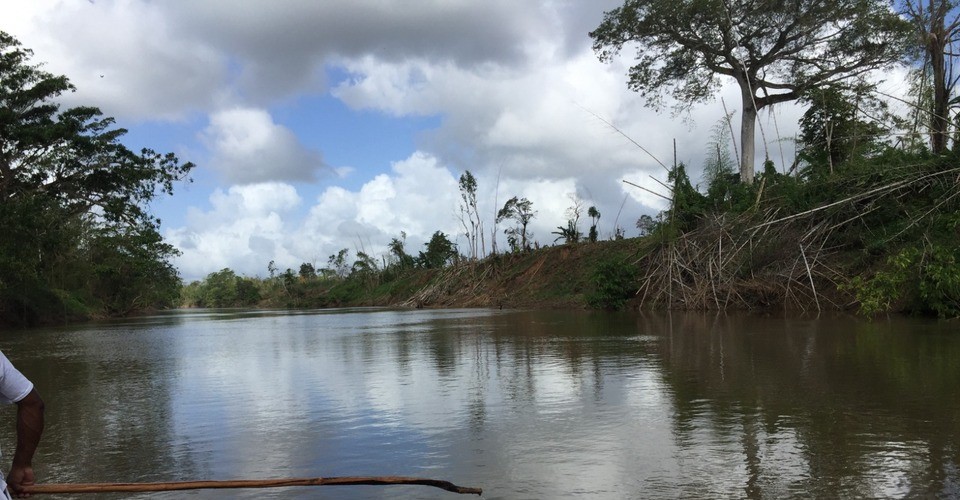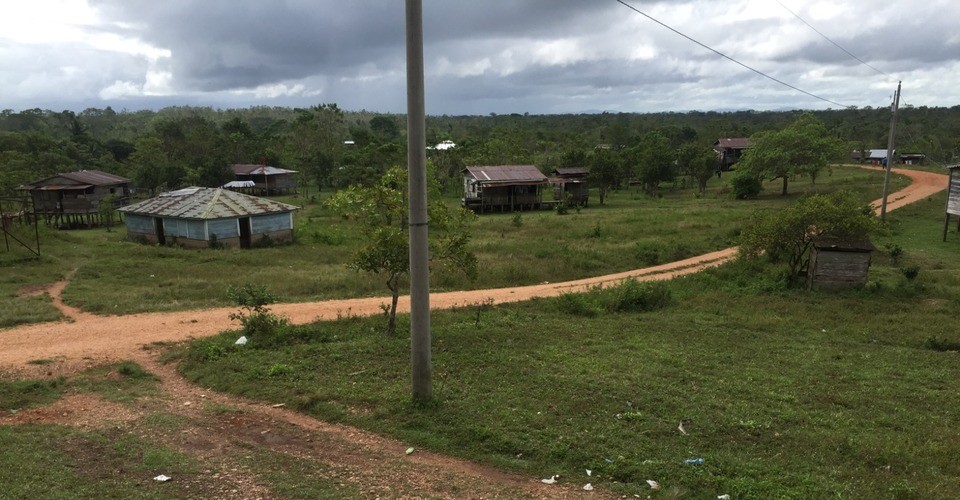The Colonisation of Mayangna territories in Nicaragua

BY MAYANGNA WAHAINI RAMHNI TANI (MAWARAT) FOR DEBATES INDÍGENAS
The expropriation of ancestral territories to settlers is a risk to the life, sustainment, and culture of the Mayangna people. They don’t live peacefully anymore: the men go together in groups to work, for fear of being ambushed, and the women leave their houses at sunset for fear of being raped. Even though the government is calling for peaceful co-habitation between the indigenous and the settlers, their ways of life are incompatible.
The indigenous Mayangna people live in the Caribbean Coast of Honduras and Nicaragua. They are known to be the first inhabitants of the region, and linguistically they are subdivided into four native languages: Panamahka, Yusku, Tuahka and Ulwah in Nicaragua and Tawahka in Honduras. Among the episodes of extermination and displacement, our history entails the extinction of the linguistic variants Bawihka and Prinzu.
The reductionist practices towards populations and culture that was employed with logistic support from the English and the Spanish (indirectly and directly), obliged us to settle in the interior of the Caribbean Coast of Nicaragua (in the high mountains), where there is a rich biodiversity, and abundant natural resources underground, in forestry and hydraulics. This doesn’t mean that our ancient settlements were not also places rich in natural resources. However, these have been affected by the over-exploitation of big forestry, mining and banana companies, especially during the time of the enclave economy (1880-1940), which was impulsed by the then Government of Nicaragua through concessions given to transnational companies.

The presence of settlers has interrupted the tranquillity of the Mayangna. Settler camp. Photo: MAWARAT
The collective struggle for the territories
The project to exterminate the Mayangna people could not be carried out. During the resurgence of the indigenous movements of the Nicaraguan Moskitia in the 1960s, our people actively participated in the struggle for territorial recognition and autonomy, which was reflected in the formation of the organizations LIMON (Levantan Indígenas de la Montaña del Norte ) in 1974 and the SUKAWALA - Mayagna National Organization in 1985.
Through a peace agreement, the Mayangna also became involved in the resistance struggle and returned to their territories from Honduras, where they were refugees as a result of the civil war of the 1980s. In the Political Constitution of Nicaragua of 1987, they managed to get the State to explicitly recognize the existence of indigenous peoples through autonomy for the exercise of self-government and the granting of territorial, linguistic and cultural rights. Likewise, Law No 28 Statute of Autonomy of the Regions of the Caribbean Coast of Nicaragua was complied with, which allowed the election of the first autonomous governments.
After more than 15 years of legal struggles for land claims (1990-2005), the government began titling land. The process was also a consequence of the international lawsuit of the Indigenous Mayangna Community of Awastingni and the consequent sentence of the Inter-American Court of Human Rights in the Awastingni versus Nicaragua case. The Mayangna Sauni As territory was the first territory to receive its title deed. To date, the Mayangna people have recognized more than 8,300 square kilometers, administratively conglomerated into nine territorial units located in three regions of the country: North Caribbean Coast, South Caribbean Coast and Special Regime Zone. The population exceeds 4,000 inhabitants.
The greed of third parties for the natural resources located in the indigenous territories dates from the first contact with the colonial powers. Greed is a pandemic that permanently plagues all indigenous peoples in a general way. In the second half of the 20th century, the agrarian reforms carried out by the Government of Nicaragua promoted the first occupations in indigenous territories without the consent of their legitimate occupants. In this way, the path to the colonization process was opened in the recent era.

The Mayangna people actively participate in the struggle for the recognition of their territory and autonomy. Photo: MAWARAT
Mayangna life after the arrival of third parties
Peace and harmony with nature reigned in our territories. The freedom to use and enjoy land and natural resources was a reality. We did not take precautions to go to work in the fields, there was no fear of going fishing and when we went hunting and spent days, weeks and even more than a month in the mountains, the families were not alarmed. Biodiversity was our source of protein and calories, and the practice of sustainable agriculture ensured the well-being and sustenance of our families.
Everything changed with the presence of non-indigenous third parties, which has caused the rupture of the experience of community and tranquility for the Mayangna. Although the Nicaraguan government calls for peaceful coexistence between indigenous people and mestizo settlers, this project is not feasible, given that there are two antagonistic and incompatible fronts. While indigenous peoples fight for territorial recovery, third parties appropriate indigenous lands, converting them into extensive pastures for cattle ranching, mining expansion, or the establishment of palm, bean, and corn monocultures. Although the colonists remain settled under certain regulatory conditions, their way of linking themselves with the land differs abysmally from the practices of the indigenous people, which implies their own form of government, culture, language and identity.
Coexistence and interculturality are applied within each person's own space: each indigenous, Afro-descendant and coastal mestizo people have their own bioterritorial spaces defined. The fact of living together in the same ethnic, regional and political environment, for hundreds of years, allows us to promote and practice interculturality. On the contrary, the mestizo settlers are recent arrivals who claim rights within the territorial spaces that have already been delimited, demarcated and titled. Therefore, they break the peaceful coexistence.
Although Mayangna women have always worked their own plots, since the arrival of non-indigenous third parties, they have no longer been able to do so freely and have stayed in their homes for fear of being raped. In some territories, such as Sauni As and Sauni Arunka, men go to their fields in groups for fear of being attacked by armed settlers. Now there is no community security, we live in alarm. Even in some communities, women get ready at sunset to go to the mountains to spend the night away from their homes since they do not feel safe. Sometimes communities are also attacked or burned in their entirety.

Peaceful co-existence between the settlers and the Mayngna is impossible. Photo: MAWARAT
Displaced by force
Some studies on the Mayangna indigenous territories show that the settlers would have destroyed almost 500,000 hectares of broadleaf forests (consisting of broad-leaved trees) to convert them into pastures for cattle ranching and extensive agriculture. Thus, they ceased to be means of livelihood for the indigenous people. In the historical records of the Mayangna authorities, 56 murders perpetrated by heavily armed third parties have been reported. The first murder related to the land conflict dates back to June 16, 1979, in the community of Sauni Bas (Sikilta).
Also, entire communities have been burned, such as the case of Alal (January 29, 2020), the Kiwakaumbaih massacre (August 23, 2021) and the Wilu burning (March 11, 2023). The community authorities blame the settlers who circulate armed in the indigenous territories. In addition, non-indigenous third parties buy land at ridiculous prices using coercion, intimidation and manipulation or, directly, take it by force to sell it at a better price to other foreigners. They simulate legality through public deeds of sale or other contracts in total contravention of the inalienable, unattachable and imprescriptible nature of communal property established in the Law on Communal Property Regime 445.
The Mayangna culture is in danger, many people are being displaced from their communities to urban centers. There are different forms of displacement in the Mayangna territories and they tend to follow the same pattern as in with the Miskitu and Rama people in the region: settlers forcefully locate themselves in community plots and under threats force the indigenous people to abandon the property. They even offer them money saying that if they don't accept the good way, they will be evicted the hard way. Communities turn to state authorities for justice, but unfortunately, the response is not sufficient in most cases.
Proposals to end the expropiation of the land
The situation has escalated to such a point that, in some communities, the young indigenous work for the settlers. Given the lack of economic means, they have gone from being owners of their own lands to being workers or waiters for the settlers, who operate with large economic capital.
In these circumstances, it is more than urgent to take measures to stop the continuous arrival of third parties to the Mayangna territories and all indigenous territories. The concept of indigenous territoriality is transforming very rapidly: the misconfiguration of communal and community land tenure is obviously disastrous and leads to the privatization and expropriation of the territories that we have governed and administered for centuries.
From MAWARAT we suggest four concrete measures. To begin with, the immediate application of the fifth stage of the demarcation process related to the regularization of the territories. On the other hand, the consolidation of the community police forces through improved logistics, financing of territorial surveillance and security, and constant patrols and monitoring in the Mayangna territories.
Finally, we believe that it is extremely important to promote legal pluralism in order to exercise indigenous justice and punish those indigenous people who, in association with settlers, offend against communal heritage. It is urgent to work in the indigenous justice system, given that there is also participation of community members themselves in illegal acts that violate the integrity of the communal property.
Mayangna Wahaini Ramhni Tani (MAWARAT) is an indigenous organisation and the name means “Mayangna brotherhood for our rights”.
Tags: Indigenous Debates


